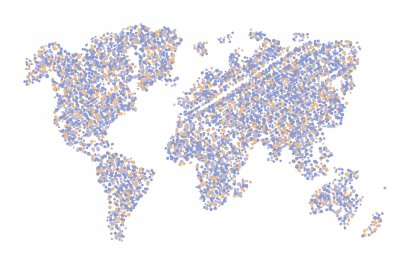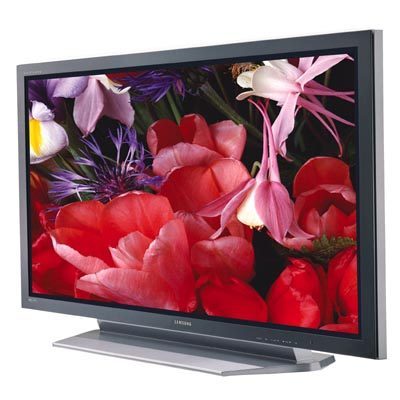 What is a feature? It is a trait or a singularity that identifies someone or something. Normally the term is used in the plural, since there are several elements that serve to describe the different realities. It is worth noting that those issues that distinguish and differentiate may be associated with the personality, character, physical appearance of a person or the symbolic aspect. Precisely, it has its origin in the Greek from the word kharakteristikos (understood as the detail of a person that allows to distinguish it, differentiate it), and this comes from kharakter (character).
What is a feature? It is a trait or a singularity that identifies someone or something. Normally the term is used in the plural, since there are several elements that serve to describe the different realities. It is worth noting that those issues that distinguish and differentiate may be associated with the personality, character, physical appearance of a person or the symbolic aspect. Precisely, it has its origin in the Greek from the word kharakteristikos (understood as the detail of a person that allows to distinguish it, differentiate it), and this comes from kharakter (character).
Likewise, it is called characteristics or technical or natural aspects to that information that is typical of a subject, object or state and that defines it as such.
All those aspects or variables that make up the state and identity of a particular entity are included, which can be both a person and an animal, a plant, an object or even a condition or scenario.
Feature types
Physical description
 Everything that has a certain shape can be described from observable properties. Thus, an individual presents particularities related to their size and external appearance and we speak of a certain height, weight, the color of their eyes and hair, etc. If we refer to a specific object or a territory, we also state a series of physical elements.
Everything that has a certain shape can be described from observable properties. Thus, an individual presents particularities related to their size and external appearance and we speak of a certain height, weight, the color of their eyes and hair, etc. If we refer to a specific object or a territory, we also state a series of physical elements.
Do you want to expand ?: Physical Characteristics
Psychological description
 When we meet a person beyond their physical appearance, we can already talk about their psychological characteristics. An individual can be generous, sincere, impulsive and kind and all these personality traits express the different aspects of his human dimension.
When we meet a person beyond their physical appearance, we can already talk about their psychological characteristics. An individual can be generous, sincere, impulsive and kind and all these personality traits express the different aspects of his human dimension.
When referring to animals, we are talking about physical appearance but also temperament (for example, we say that a dog is large and affectionate).
Do you want to expand ?: Personality and the 8 existing types according to Carl Jung
Objectivity and subjectivity
In a description we can use objective or subjective characteristics or a combination of both. In the language of everyday life, it is common to use both subjective and objective terms (we say that a person is tall in an objective way and that he is kind, a clearly subjective and opinionable trait). In the scientific context, the characteristics of any reality must be indicated objectively, otherwise it falls into subjectivism, an antiscientific approach.
A subjective view, and divergent opinions
On the other hand, it is important that we mention that the characteristics that are mentioned about someone or something often result from the subjectivity of each one, because for example, for me someone may be the kindest to me and for another it may not be at all. Meanwhile, for someone Juan may have very dark hair and for another that hair may not be dark enough.
Another case in which the characteristics are detailed is when describing or defining a social set such as an ethnic group, a nation, a political party. All these entities have unique and shared points that define them as such and that give them an identity in contrast to others of the same class and, as with the cases mentioned above, they are the ones that facilitate differentiation and inclusion, as appropriate. .
Explanatory value: the main and secondary
Not all characteristics have the same explanatory value. In fact, some of them are essential and make up the fundamental of something, while others are accessory or secondary. If we think, to give a simple example, in soccer, its main characteristics are the basic rules of the game and the secondary ones are the aspects that intervene in the game but do not make up its essence (the offside rule is basic and essential to play soccer but the choice of one part of the field or another is a secondary matter).
The definition of characteristics of a thing takes place in various fields, one of the most common being technical.
For example, the establishment of technical characteristics that configure a device or technological artifact. Before the acquisition of a device or device, such as a car, a detail of the aspects that compose it as such is often also received. Among them, class and quality of the engine, maximum speed reached, interior composition of the vehicle, type of bodywork and wheels, accessories and / or special attachments, etc.
Another case can occur with the purchase of a cell phone or a computer. Frequently, the seller will establish the specific specifications of the device in detail, even in comparison with other similar or related ones. For example, type of memory, screen, special options, price, uses and functions.
In as much and in this sense, the knowledge of the characteristics that this or that artifact shows will be decisive when acquiring them or not, because it is precisely the prior knowledge of some issues that certain devices or machines have that lead someone to love buy. If in the product offer one does not present those characteristics that are sought, we will not buy it and if we will lean towards those that do have them.
Particularities observed in the animal kingdom
Also animals and plants, in addition to people and objects have their own characteristics and very distinctive of their species, for example a cat has the following characteristics: it has four legs, a body covered by abundant fur, and meows.
Virtual world of gamers
On the other hand, at the request of the role playing games, the concept of characteristic allows to designate that property that defines a fictional, imaginary being, who clearly participates in the aforementioned game. Now, the characteristics in question can be mental or physical and will always be expressed from numerical values that are recorded on a sheet formally called the character sheet.
Fotolia photos: pakpong / kuroksta / rodjulian









